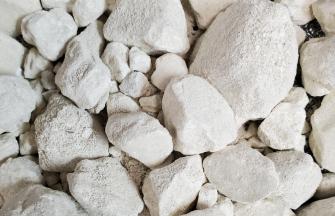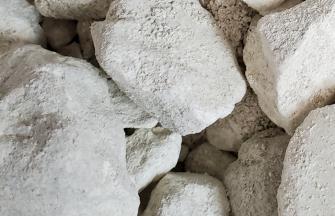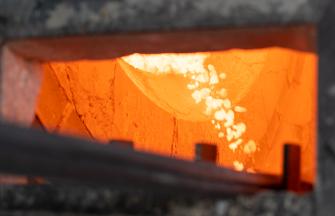Description:
As a leading producer of high calcium quicklime, Carmeuse works with you to deliver a high-performance product to meet your specific needs. High calcium quicklime, chemically known as calcium oxide (CaO), or commonly referred to as lime, is a widely used chemical compound that originates from calcium carbonate (aka limestone). Quicklime is primarily made up of calcium, magnesium and small amounts of other chemical compounds depending on the formation of the originating limestone.
Our Carmeuse high calcium quicklime is derived from select high calcium limestone deposits containing no more than 5% magnesium content. Our material is routinely tested for quality and consistency, to ensure the right chemistry and physical properties for industrial applications.
Benefits:
- High calcium content (CaO) provides superior performance for application needs
- Efficient source for pH adjustment and acidity control
- One of the most cost-effective alkaline materials, compared to caustic and others
- Routine testing for quality and consistency
- Readily available through our network of plants in a variety of sizes from pebble down to fines
- Safety advantages compared to caustic soda
For additional information, to view our Product Typical Sheets or to discuss availability with our sales group, please contact us.
Documentation
For additional information, to view our Product Typical Sheets, or to discuss availability with our sales group, please contact us.
High Calcium Quicklime Production
High calcium quicklime (CaO) is produced when limestone, or calcium carbonate (CaCO3), is heated in a kiln through the process of calcination.
CaCo3 + heat --> Cao = CO2
After limestone with high calcium content is sourced from our quarries and underground mines, it is transported and processed through a series of crushers to reach a desired size. The material is then heated in a lime kiln to extremely high temperatures to produce high calcium quicklime. Carmeuse offers a variety of sizes of high calcium quicklime to meet your application needs, with delivery from our large network of plants. For sizing and availability, contact us.
High calcium quicklime does not have a long shelf-life because it quickly reacts with moisture, and other compounds, in the ambient air. Thus, it must be protected from the elements from production all the way through use in the specified application. After quicklime is produced, it is stored in a silo, then transferred into an enclosed vessel (truck, rail or barge) for transportation, and then offloaded into a silo for onsite storage until it is pulled for processing. Most of the transloading is accomplished with pneumatics. For expert support with your lime handling systems, learn about our Carmeuse End-2-End Services.
Specifications
Typical Ranges are below.
Due to the chemical composition of calcium oxide, it is used in a wide variety of products and applications. Basic specifications are listed for your convenience but please contact us by email or phone for further guidance.
Calcium content range (CaO): 93-97%
Size range: 2 ¼” down to 0”
Reactivity: 30-50 °C minimum 3-minute heat rise
For a complete list of product specifications, please contact us for product typical sheets.
Uses for High Calcium Quicklime
High calcium quicklime, or lime, is one of the most effective alkaline materials commonly used to neutralize acidic compounds, adjust pH, remove impurities, disinfect, stabilize sludge, remove gaseous pollutants from exhaust streams, and dry/stabilize soils. Applications include:
- BOF and EAF steelmaking as a fluxing agent to achieve proper slag chemistries and physical properties, thus removing impurities in the molten steel
- Reduces pathogens in agricultural biosolids
- Reagent for acid neutralization and pH adjustment
- Water treatment/contaminant removal
- Used to remediate waste sludge sites and neutralize acid mine drainage
- Ore Processing – controls flotation by adjusting pH and/or consumed in a metathesis reaction
- Power Plants – Reduces acid gas emissions into the environment, known as flue gas treatment (FGT) or flue gas desulfurization (FGD)
- Paper Production – Improves causticizing efficiency
It all comes down to the level of calcium carbonate vs. magnesium carbonate in the originating limestone. “High calcium” indicates a high concentration of calcium carbonate, with magnesium carbonate ranging between 0 to 5%; “dolomitic” indicates much higher magnesium carbonate levels, ranging from 35 to 46%.
When evaluating what lime product is best suited for your needs, several things should be taken into consideration:
- Purity and quality of raw materials
- Environmental compliance
- Existing onsite equipment
- Storage and transportation costs
- Process throughput
- Final product specifications
For an in-depth look at how these factors could impact your decision, read the “Quicklime, Hydrate or CALSAFE Lime Slurry?” article in our Knowledge Center.
Product specifications will vary by location. For more information, including availability and product typicals for your area, contact our team.
Do you have a question about this product?
Ask our specialists


